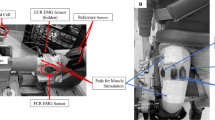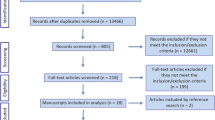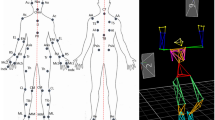Abstract
The goal of this study was to describe typical motor profiles in younger schoolchildren. A total of 89 subjects aged 8–10 years, students of primary schools of Moscow not going in for sports took part in the study. Twenty-five indices of psychophysiological (NS-PsihoTest), psychomotor (KID-3), posturography and locomotor tests (nine coordination tests) have been measured. According to their motor coordination, the children have been subdivided into groups using k-means cluster analysis. The four obtained clusters are supposed to reflect different types of motor coordination and correspond to four individual motor profiles typical of children aged 8–10 years. These motor coordination types were not associated with age, sex, or constitution; therefore, they may be promising for selecting sports. The ability to anticipate and a high speed of wrist movement were typical of children from the first cluster. Subjects from the second cluster were more successful in rapid, rhythmic, and automatic actions, based on the mechanism of intrinsic programming. Subjects from the third cluster displayed a moderate ability of postural control, but at the same time, they were characterized by smooth, accurate, and rhythmic arm actions based on visual feedback, and an advanced sense of rhythm and space sense. Subjects from the fourth cluster were the most coordinated ones, which is important for sports and occupational activities requiring a high level of coordination.
Similar content being viewed by others
References
Gordeeva, N.D., Eksperimental’naya psikhologiya ispolnitel’nogo deistviya (Experimental Psychology of Executive Action), Moscow: Trivola, 1995, p. 208.
Lyubomirskii, L.E., Upravlenie dvizheniyami u detei i podrostkov (Movement Coordination in Children and Adolescents), Moscow: Pedagogika, 1974, p. 229.
Lyakh, V.I., Koordinatsionnye sposobnosti v sporte: teorii, modeli, napravleniya nastoyashchikh i budushchikh issledovanii. Modelirovanie upravleniyami dvizheniyami cheloveka, (Coordination Abilities in Sport: Theories, Models, Directions of Present and Future Studies. Modelling of Human Movement Control), Shestakov M.P, and Averkin A.N., Eds., Moscow: SportAkademPress, 2003.
Nikitin, S.N., Lovkost’ — istoriya, problemy, perspektivy (Dexterity: History, Problems, and Prospects), St. Petersburg, 2005.
Lyakh, V.I., Koordinatsionnye sposobnosti: diagnostika i razvitie (Coordination Abilities: Diagnostic and Development), Moscow: Divizion, 2006.
Nazarenko, L.D., Approximate Classification of base movement coordinations using a Set of Common Specific Features and Structural Elements, Teor. Prakt. Fiz. Kul’t., 2003, no. 8, p. 19.
Bernshtein, N.A., Fiziologiya dvizhenii i aktivnost’, (Movement Physiology and Activity), Gazenko O.G., Ed., Moscow: Nauka, 1990.
Vozrastnaya fiziologiya. Fiziologiya razvitiya rebenka (Developmental Physiology: The Physiology of Child Development), Bezrukikh M.M., Son’kin V.D., and Farber D.A., Eds., Moscow: Akademiya, 2003.
Razvitie mozga i formirovanie poznavatel’noi deyatel’nosti rebenka (Brain Development and Formation of Child Cognitive Activity), Farber D.A., and Bezrukikh M.M., Eds., Moscow: Mosk. Psikhol.-Sots. Inst., 2009.
Bezrukikh, M.M., Kiselev, M.F., Komarov, G.D., et al., Age-Related Features of Moving Activity in Children Aged from 6 to 16 year, Fiziol. Chel., 2000, vol. 26, no. 3, p. 100
Gazhe, P.-M. and Veber, B., Posturologiya. Regulyatsiya i narusheniya ravnovesiya tela cheloveka (Posturology. Regulation and Disorders of Balance in Human), St. Petersburg: SPbMAPO, 2008.
Sarsekeev, G.M., Increasing in Efficiency of Acrobatics Training in Children Aged from 6 to 9 years on the Base of Coordination Development, Cand. Sci. (Ped.) Dissertation, Moscow, 1994.
Hirtz, P., Phänomene der motorischen Entwicklung des Menschen, Hofmann, 2007.
Karpenko, L.A., Viner, I.A., and Sivitskii, V.A., Metodika otsenki i razvitiya fizicheskikh sposobnostei i zanimayushchikhsya khudozhestvennoi gimnastikoi. Uchebnoe posobie (Methods of Estimation and Development of Physical Abilities in Rhythmic Gymnastics Students), Moscow, 2007.
Lyakh, V.I., Koordinatsionnye sposobnosti shkol’ni-kov (Coordination Abilities in High Schoolers), Minsk: Polymya, 1989.
Kazennikov, O.V. and Levik, Yu.S., Study of Motor Cortex Excitability under Load Holding Task, Fiziol. Chel., 2009, vol. 35, no. 5, p. 71
Sokolkina, V.A., Genetic and Environ Determinants in KS Variability in Children Aged from 7 to 10 years, Cand. Sci. (Pedagogic.) Dissertation, Moscow, 1991.
Farfel’, V.S., Fiziologiya sporta (Sport Physiology), Moscow: Fizkul’tura i sport, 1960.
Gurfinkel’, V.S., Kots, Ya.M., and Shik, M.L., Regulyatsiya pozy cheloveka (The Human Posture Regulation), Moscow: Nauka, 1965.
Aoi, S., Ogihara, N., Funato, T., et al., Evaluating Functional Roles of Phase Resetting in Generation of Adaptive Human Bipedal Walking with a Physiologically Based Model of the Spinal Pattern Generator, Biological Cybernetics, 2010, vol. 102, no. 5, p. 373.
Smits-Engelsman, B.C., Van Galen, G.P., and Duysens, J., The Breakdown of Fitts’ Law in Rapid, Reciprocal Aiming Movements, Exp. Brain Res., 2002, vol. 145, no. 2, p. 222.
Schaal, S., Stemad, D., Osu, R., and Kawato, M., Rhythmic Arm Movement Is Not Discrete, Nat. Neurosci., 2004, vol. 7, no. 11, p. 36.
Author information
Authors and Affiliations
Additional information
Original Russian Text © A.M. Andreeva, E.B. Akimov, 2011, published in Fiziologiya Cheloveka, 2011, Vol. 37, No. 4, pp. 44–54.
Rights and permissions
About this article
Cite this article
Andreeva, A.M., Akimov, E.B. Cluster structure of the psychomotor and coordination spheres in younger schoolchildren. Hum Physiol 37, 430–439 (2011). https://doi.org/10.1134/S0362119711040049
Received:
Published:
Issue Date:
DOI: https://doi.org/10.1134/S0362119711040049




